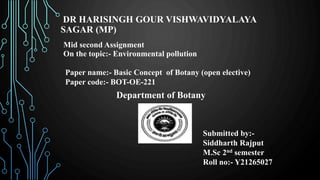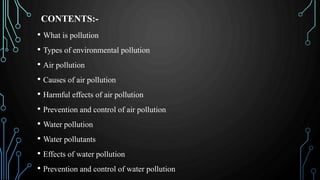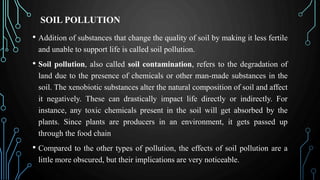The document discusses the different types of environmental pollution including air, water, soil, noise pollution. It describes the causes, effects and methods to prevent each type of pollution. The main types of pollution covered are air pollution caused by vehicles, industries and biomass burning, which causes respiratory issues. Water pollution from industrial effluents and sewage affects aquatic life. Soil pollution from agriculture and waste impacts soil fertility. Noise pollution is mainly from vehicles, construction and loud music which disrupts humans and wildlife. Prevention methods include use of emissions standards, waste treatment and not exceeding noise limits.


























